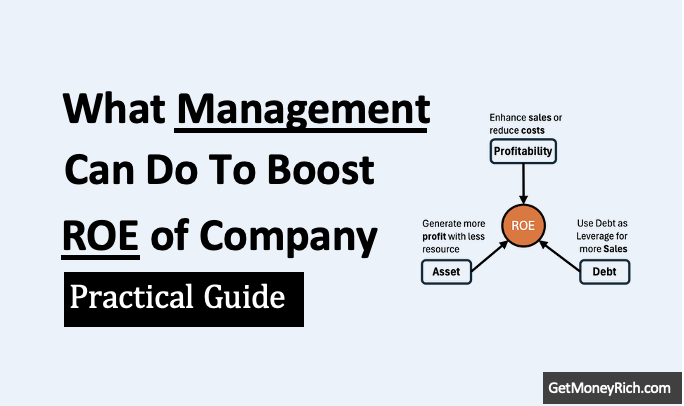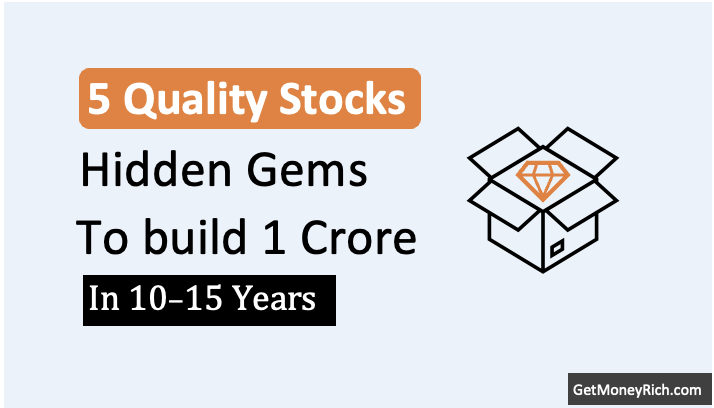Goodyear India share price is trading at attractive levels? Lets do a fundamental analysis of it.
Goodyear is basically brand which originated in USA.
Charles Goodyear was the person who discovered the process of vulcanisation of rubber in 1839.
Ford’s Model-T was the first car manufactured for mass public in USA in 1908.
This car was fitted with Goodyear’s tyres.
Goodyear’s presence in India dates back to 90 years in history.
In 1961, Goodyear, India became a public limited company.
Goodyear has two tyre plants in India. One in Ballabgarh, Haryana and other in Aurangabad, Maharashtra.
Total Shareholding pattern of Goodyear, India is as below:
- Promoters: 74%
- Institutions (Banks, MF’s etc): 7.9%
- Individuals: 13%
- Others: 5.1%
Who are the promoters of Goodyear, India? Goodyear Orient Company Pvt. Ltd, USA.
Who are competitors of Goodyear in India? The companies are ranked in order of their sales turnover.
- MRF
- Apollo
- JK Tyre.
- Ceat
- Balakrishna Ind.
- TVS Srichakra.
- Goodyear, India.
So you can see that, though Goodyear is one of the Pioneers of tyre manufacturing in the world, but its presence in India is not as strong.
Goodyear India is known for its ultra large earthmover tyres manufacturing in India.
Large Earthmover manufacturer in India BEML, and Coal India etc procures tyres for their earthmover’s from Goodyear.
Though Goodyear India is not as big as MRF, Apollo or JK Tyre, but it displays very strong business fundamentals.
Hence I thought of doing Goodyear India Share Price Analysis.
Though Goodyear, India share price looks overvalued, but in last 1 month, its price has fallen from Rs.1,270 to Rs.1,110 levels (fall by 12.5%).
This has attracted my attention towards it.
And I must say, I was pleasantly surprised to observe its business fundamentals and historic background.
#1. Business Fundamentals of Goodyear, India
In order to analyse business fundamentals of Goodyear, India lets check the following:
- Growth rates.
- Financial ratios.
- Miscellaneous data.
- Price movement of last 10 years.
- Quarterly Trends.
- Intrinsic Value
#1.1 Growth Rates
One of the most important metric that dictates the build-up of intrinsic value is future growth rate.
A stock which is likely to grow fast in future, will have a higher intrinsic value.
The financial parameters which must grow fast enough in stocks are as below:
- Free Cash Flow Growth
- Reserves Growth
- Income Growth
- Profit Growth
- Dividend Growth &
- EPS growth (my favourite)
I use my stock analysis worksheet to quantify all these values.
Goodyear, India’s growth rates has been reasonable (except for income growth).
- FCF growth > 19%
- Reserves growth >25%
- Income growth > 6.3%
- EBITDA growth > 11.11%
- PAT growth > 12.5%
- Etc…
[Check: Stock Analysis Report – Goodyear India.pdf]
#1.2. Financial Ratios
Financial ratios helps investors to comprehend the numbers better.
It gives a first impression about the stock.
The ratios that my worksheet highlights prominently are as below:
- Price Valuation
- P/E – Price to Earning Ratio.
- P/B – Price to Book Value Ratio.
- P/S – Price to Sales Ratio.
- P/FCF – Price to Free Cash Flow.
- Profitability
- Return on Equity (ROE)
- Return on Capital Employed (RoCE)
- Cash Returned on Invested Capital (CROIC)
I use my stock analysis worksheet to quantify all these values.
Goodyear, India’s Financial ratios has been as below:
- P/E = 19.72
- EV/EBITDA = 10.17
- P/Sales = 0.67
- P/Book Value = 3.62
- ROE = 18.4%
- ROCE = 32.9%
- DEBT / EXPENSE = 0%
[Check: Stock Analysis Report – Goodyear India.pdf]
#1.3. Miscellaneous Data
How to get a rough idea about the current position of the stock’s price?
I prefer to look at the below indicators?
- Current price compared to its 52W high and Low price.
- How much the price changed in last 30 days and 12 months.
- What is the market cap.
- Compared to the Industry P/E, what is the P/E of stock.
- What is the price growth in last 3Y, 5Y and 10Year.
- What is the average dividend yield in last 3Y, 5Y and 10Year.
I use my stock analysis worksheet to get quick answers to these questions.
Few Miscellaneous data of Goodyear, India are as below:
- Price:
- 52W High = 1,274
- 52W Low = 523.25
- 1 Year Change = 25.4%.
- Price Growth:
- 3Y growth = 26.8%,
- 5Y growth = 29.9%,
- 10Y growth = 23.8%.
- Dividend Yield:
- 3Y growth = 1.5%,
- 5Y growth = 1.6%,
- 10Y growth = 2.3%.
- Etc…
[Check: Stock Analysis Report – Goodyear India.pdf]
#1.4. Price Chart of Last 10 Years
In last 5 years, the market price of Goodyear, India has shown a CAGR growth of 29.9%.
In last 10 years, the market price has shown a CAGR growth of 23.8%.
This is quite impressive.
But, frankly speaking price charts tell very less about a stock (unless you are a technical analyst).
But I still like to give it a glance. Why?
It gives an idea of how the current price is placed compared to last 10 years trend.
There can be few scenarios here:
- If price is only bullish – current price can be overvalued.
- If Price is remaining modest – poses a question why price is not growing fast enough?
- When price is falling – current price can be undervalued or business fundamentals may be weakening.
I use my stock analysis worksheet to generate the 10 Year price chart and analyse it accordingly.
Please use the below link to view the price chart of Goodyear, India.
[Check: Stock Analysis Report – Goodyear India.pdf]
#1.5. Quarterly Trends
Why to look at quarterly results?
For investors (not traders), long term trends are more valuable.
But it is also essential that the investor should not miss to note the short term trends.
If in short term, the income, earnings are falling, its a risk factor that must be taken into consideration.
Investor must get the answers for the Why’s before proceeding.
The quarterly trends that I refer are as below:
- Total Income – TTM data verses last FY data (if rising or falling).
- Net Profit – TTM data verses last FY data (if rising or falling).
- Earning Per Share (EPS) – TTM data verses last FY data (if rising or falling).
I use my stock analysis worksheet to get pictorial chart for the above important informations.
Quarterly trends of Goodyear, India are as below:
- Total Income-TTM: Up (from Rs.1,566 to Rs.1,665 crores).
- Net Profit-TTM: Up (from Rs.127 to Rs.129 crores).
- EPS-TTM: Up (from Rs.55 to Rs.56).
[Check: Stock Analysis Report – Goodyear India.pdf]
#1.6. What is the Intrinsic Value of this stock?
The estimated intrinsic value of Goodyear, India is lower than its market price.
But its market price is trading at a close range of its intrinsic value.
Its market cap is close to Rs.2,500 crore. Hence it can said to be a small cap stocks.
Considering that it is a small cap stock, but its world presence is very strong.
The parent company is a world renowned brand.
No doubt why the business fundamentals of this stocks looks robust.
The ROE (18.4%) and RoCE (32.9%) of Goodyear India is better than the average market levels.
Moreover, it is also a zero debt company.
Though the estimated intrinsic value of this worksheet may not be perfect, but it works well for me.
Even if it is a rough estimation of intrinsic value, it is still worth doing it.
Because investing in a stock without comparing its intrinsic value with its current price is a big mistake.
There are several ways to estimate intrinsic value of a stock. But I rely more on the following methods.
I have incorporated all of my favourite methods in my worksheet to estimate intrinsic value of stocks.
An intelligent formula then generates the net intrinsic value of the stock derived from all these individual methods:
- DCF method
- NCAPS method
- Absolute PE method
- Reproduction cost method
- Benjamin Graham’s Formula
- Earning Power Value (EPV)
I use my stock analysis worksheet to estimate intrinsic value of stock.
Please use the below link to view the intrinsic value of Goodyear, India.
[Check: Stock Analysis Report – Goodyear India.pdf]
What is the final conclusion?
This worksheet considers all aspect of stock to arrive at a final conclusion.
What is the ultimate question in stock investing?
- The stock is good or bad?
How to arrive at this conclusion?
My stock analysis worksheet does this very nicely for me.
Based on the following parameters, it generates an overall grade for its stock.
If the generated grade is above 85%, the stock is considered good.
For Goodyear, India the overall gradings are as below:
- Market Price: Slightly overvalued.
- Future growth: Excellent.
- Management’s efficiency: Excellent.
- Profitability: Low.
- Financial health: Decent.
- Bankruptcy thread: Nil.
- Overall grade: 79.5% (ideal: 85%+).
[Check: Stock Analysis Report – Goodyear India.pdf]
It must be noted that, investors must give importance to the price valuation of stock.
A stock which is priced right (undervalued), and has a score of 85%+ is ideal.







great informetion